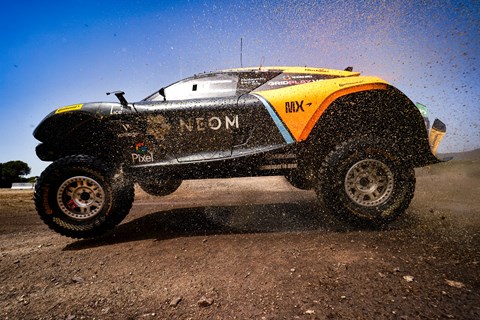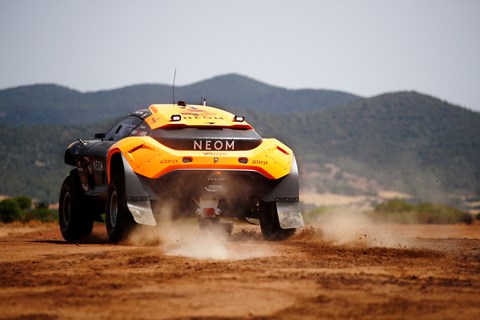► Extreme E returns to Sardinia for a double-header
► Seven-kilometre course
► Hot dry conditions with relatively compact surface
Extreme E cars are required to negotiate some of the toughest, untamed terrain on the planet, and to do so as fast as physically possible. Driving talent is one part of the equation – the field includes the likes of Sebastien Loeb – but car setup plays an equally important role. So just how is it done?
CAR magazine spoke to the McLaren Extreme E team’s senior principal and race engineer Teena Gade, to find out just how teams squeeze performance out of the Odyssey 21, and how they prepare it for a lunar-esque landscape – littered with things that want to break it.

How to setup an Extreme E car
‘The car needs to be surface agnostic,’ reveals Gade. ‘It just needs to be completely predictable, as often as possible.
‘If you think of the straight in Shanghai, that’s just over 1.2 kilometres. If you don’t get a very good corner exit going down that street, the amount of time you lose on the lap is huge,’ Gade tells CAR. ‘So one of the things you might do is you might compromise another part of the track for that corner. We don’t have that [scenario] because we’ve no idea where Emma [Gilmour] or Tanner [Foust] are going to put the car at any one time.’
‘So what you look to do, and this is true of most rally cars, is you make them as as predictable as possible in every possible scenario.’
What you can’t prepare for…
Predictability is important, but what can you do about those boulders, ruts and trickier bits of terrain? The answer in short, is nothing. These events – called ballistic events in engineer speak – are impossible to plan for or predict, so there’s no real point in trying.

‘What you can’t help to some degree is ballistic events, which are the ones there’s nothing you can do about: so they hit that rock, and it turns out the rock is actually the planet,’ Gade tells us.
So while incredibly demanding on the outside, the actual approach to setting up an Extreme E car is pretty straightforward – and in some ways, it’s similar to something even closer to home.
‘If you think about it, you get your road car, and you drive it every single day,’ explains Gade. ‘You drive it a lot of weather conditions. You drive it on lots of different types of roads.’